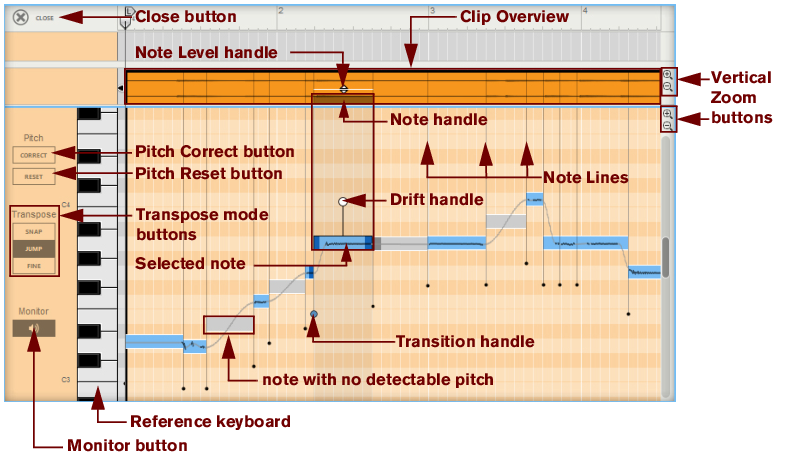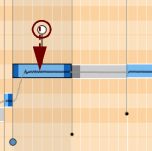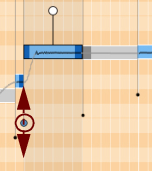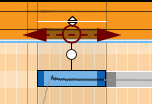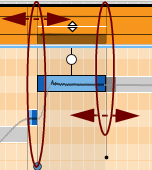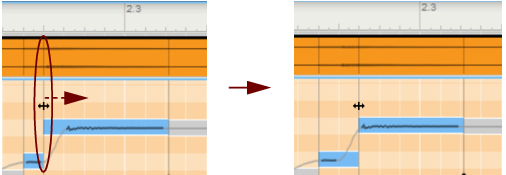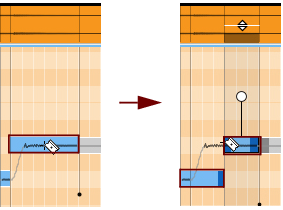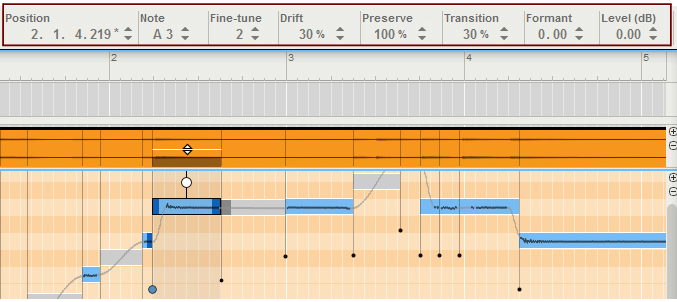Hold this and move sideways to move the note back or forth in time. The range is limited by the adjacent notes, which are indicated by the Note Lines, see “Moving notes and changing note lengths”.
These indicate where the notes start and end. You can adjust the start/end positions by click-holding a Note Line and dragging it sideways. Changing the position(s) and/or length(s) will also automatically stretch the note(s). See “Moving notes and changing note lengths”.
The Drift handle appears when you select the note(s). Drag the Drift handle downwards to reduce the amount of any natural pitch drift/vibrato present in the selected note(s), see “Attenuating pitch drift/vibrato”.
The Transition handle(s) control the pitch transition times between the selected note(s) and the previous adjacent note(s), see “Editing transition times”.
This is a three-way switch that determines what happens when you drag notes up/down on the note pane:
Snap = the notes snap to absolute semitones.
Jump (default) = the notes snap relative to their original pitches, i.e. moves in semitone steps but preserves any fine tuning.
Fine = the notes can be transposed freely, in cents.
See “Changing transposition” for more details about transposing notes.
Snap = the notes snap to absolute semitones.
Jump (default) = the notes snap relative to their original pitches, i.e. moves in semitone steps but preserves any fine tuning.
Fine = the notes can be transposed freely, in cents.
See “Changing transposition” for more details about transposing notes.
|
|
|
|
|
|
|
|
|
2.
|
Similar to when editing in Slice Edit mode it’s possible to “decouple” the notes from the actual audio in the note. This can be useful if the automatic note placement wasn’t perfect and you have a hard time adjusting the transition times between transposed notes (see “Editing transition times”).
Quantizing notes in Pitch Edit mode works just like when quantizing in Slice Edit mode, see “Quantizing audio”.
For more information about formants, please have a look at “What are formants?” in the Neptune Pitch Adjuster and Voice Synth chapter.
